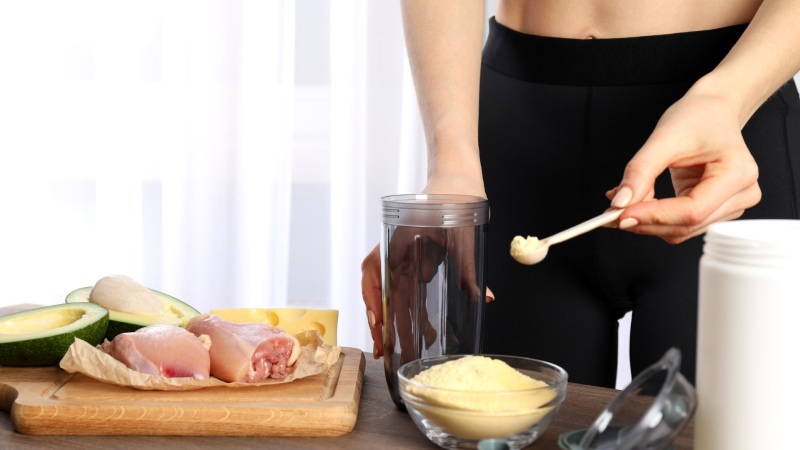Maltodextrin, often present in our daily diet, has raised many controversies and questions about its impact on our health. Is it a safe food additive or a hidden enemy that is slowly affecting our health? Let’s dive into the world of science and research to explore the mysteries of this popular ingredient.
Maltodextrin what is it?
Maltodextrin, also known as a polysaccharide, is a common ingredient in the food industry that can often be found in many products on our grocery shelves. It is a substance that is naturally derived from starch, most often derived from corn or potatoes.
Although it consists mainly of glucose molecules, it is not characterized as a substance with a pronounced sweet taste. Maltodextrin is produced through a process that is called hydrolysis. In this process, the starch is broken down by the addition of water, and is then subjected to a heating process that further breaks down the starch into smaller units.
The resulting product, a white powder, is easily soluble in water and is often added to foods as a thickening agent or as a substance that can improve the texture of a product.
Maltodextrin is present in many of the products we consume on a daily basis, such as energy drinks, bakery products, snacks and many others. Its ubiquity makes it worth taking a closer look at its properties, uses and potential side effects
Maltodextrin – properties and uses
Maltodextrin, although it has no distinct taste, is ubiquitous in many of the foods we consume on a daily basis. Its main properties, such as its excellent water solubility and ability to combine with fat molecules, make it an extremely valuable additive in the food industry.
One of the key uses of maltodextrin is to improve the texture of food products. Thanks to its emulsifying properties, it is able to stabilize fat suspensions in water, which is crucial in the production of many products such as sauces, dressings and beverages.
In addition, maltodextrin is often used as a thickening agent, making products such as soups and sauces thicker and creamier in texture.
Maltodextrin is also used as an anti-caking agent, meaning that it prevents lumps from forming in powdered foods such as baking mixes and spices. Its ability to absorb water ensures that powders remain loose and easy to spill, even after prolonged storage.
In the context of low-calorie and “light” products, maltodextrin is often used as a sugar substitute, providing energy without adding a sweet taste. However, it is worth remembering that despite the lack of pronounced sweetness, maltodextrin is still a source of calories and, importantly, affects blood glucose levels.
In a sports context, maltodextrin is often used in isotonic drinks because of its ability to quickly deliver energy to muscles without stressing the digestive system.
Maltodextrin harms and side effects
Although maltodextrin is widely used in the food industry and generally considered safe, there are several potential side effects and health issues to consider. In the context of health and wellness, it is important to understand how the substances we consume can affect our bodies, especially when they are present in many of the products we eat every day.
In the first place, maltodextrin can affect blood sugar levels. For people who struggle with insulin problems or diabetes, consuming products containing maltodextrin can lead to blood glucose spikes. Therefore, these individuals should be aware of the presence of this ingredient in the products they choose.
In some cases, maltodextrin can also lead to digestive problems. Some people may experience bloating, gas or even diarrhea after consuming products containing maltodextrin. Although these side effects are generally rare and mainly occur when the substance is consumed in large quantities, it is worth being aware of them.
It is also worth mentioning that there is some debate about the potential effects of maltodextrin on intestinal health. Some studies suggest that it may negatively affect the balance of intestinal bacteria, which could lead to health problems in the long term.

Is maltodextrin healthy for athletes?
Maltodextrin has found widespread use in products for athletes, mainly due to its ability to quickly provide energy to muscles without putting additional strain on the digestive system. But is it a valuable option for physically active people, and is it worth including in athletes’ diets?
In the context of physical endurance, maltodextrin is often used as an ingredient in isotonic drinks, which are designed to quickly replenish muscle glycogen and provide energy during intense exercise. Its ability to rapidly deliver glucose to the bloodstream makes it a popular choice among athletes involved in endurance sports.
However, it is worth noting that while maltodextrin provides quick energy, it does not provide any additional nutritional value, such as vitamins or minerals. Therefore, it is important that athletes who choose to use products containing maltodextrin should at the same time take care of a balanced diet that will provide them with all the necessary nutrients.
It’s also worth mentioning that for some people, especially those with blood sugar sensitivities, maltodextrin can lead to energy spikes and dips. This can be particularly problematic in the context of training and sports performance, where stable energy levels are crucial.
Maltodextrin and diet
In an era of increasing health and dietary awareness, where more and more people are paying attention to what lands on their plates, maltodextrin can be an ingredient that is often overlooked, despite its presence in many foods. But does it fit in with modern dietary trends and should it be included in a conscious diet?
In the context of low-carbohydrate diets, such as the keto or paleo diet, maltodextrin may be an ingredient to avoid. Although the substance itself is not sweet, it is a carbohydrate that can affect blood sugar levels, which is undesirable in these types of diets. People on low-carbohydrate diets often try to minimize all sources of carbohydrates, especially those that can affect insulin and blood glucose levels.
For those concerned about gut and microbiome health, maltodextrin may also be an ingredient worth considering. Some studies suggest that maltodextrin may affect the balance of gut bacteria, potentially leading to dysbiosis and associated inflammation. For those already struggling with intestinal problems such as irritable bowel syndrome or Crohn’s disease, avoiding maltodextrin may be considered as part of a symptom management strategy.

Maltodextrin glycemic index
Maltodextrin has a high glycemic index (GI), which means it can cause blood sugar spikes. Its GI ranges from 106 to 136, which is higher than that of regular table sugar. This means that maltodextrin can quickly raise blood sugar levels, which is especially important for people with diabetes or insulin resistance. For this reason, these individuals should be especially aware of the amount of maltodextrin they consume.
Maltodextrin provides 4 calories per gram, which is equivalent to the caloric content of sucrose, or regular table sugar. The body digests maltodextrin quickly, just like sugar, so it is useful if you need a quick calorie and energy boost. However, because of its high GI, it can cause blood sugar spikes, especially if consumed in large quantities.
Maltodextrin in foods: How to recognize it and why is it so common?
The food industry often uses maltodextrin as an additive in many of the products we find on store shelves. Its versatility and properties make it an attractive ingredient for food manufacturers, but how can we recognize it in the products we buy, and why is it so commonly used?
Maltodextrin can be added to a wide range of foods, including beverages, snacks, bakery products and even meats. Its ability to improve texture, stabilize emulsions and bind fats makes it particularly useful in food production. However, it is worth remembering that despite these “benefits” for manufacturers, the presence of maltodextrin in a product does not add any nutritional value for the consumer.
Recognizing maltodextrin on product labels can be simple, as regulations require it to be listed in product ingredients. However, it may be valuable for consumers to be aware of which products are most likely to contain maltodextrin so they can make informed purchasing decisions, especially if they are trying to avoid this ingredient for health or dietary reasons.
Summary: Maltodextrin in Light of Research and Nutrition Trends.
In light of the information and research gathered, maltodextrin appears as an ingredient with a wide range of applications in the food industry, offering manufacturers a number of advantages in terms of texture, stability and production costs. However, its presence in consumers’ diets may be subject to debate, especially in the context of current health and dietary trends.

